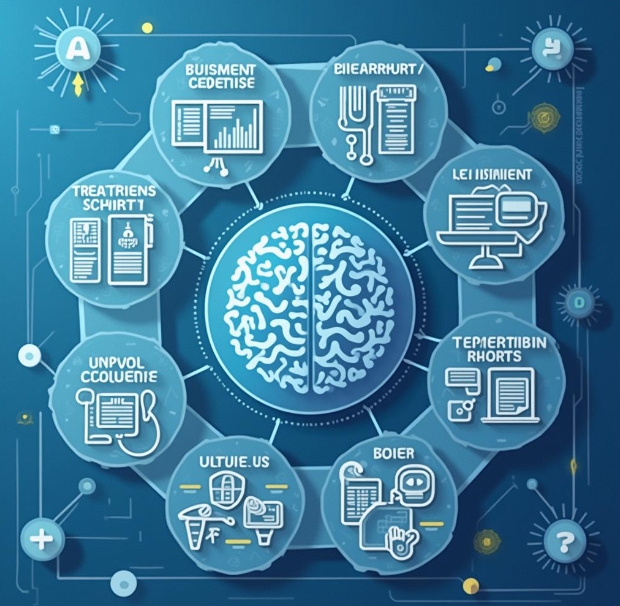Deployment of Artificial Intelligence Software: The Key to Driving the Implementation of the Intelligent Era
- latest articles
- 1.DApp Development & Customization: Merging Diverse Market Needs with User Experience 2.Analysis of the Core Technical System in DApp Project Development 3.How to achieve cross-chain interoperability in Web3 projects? 4.How does the tokenization of points reconstruct the e-commerce ecosystem? 5.How to Set and Track Data Metrics for a Points Mall? 6.What is DApp Development? Core Concepts and Technical Analysis 7.Inventory of commonly used Web3 development tools and usage tips 8.Development of a Distribution System Integrated with Social E-commerce 9.Six Key Steps for Businesses to Build a Points Mall System 10.What is DApp Development? A Comprehensive Guide from Concept to Implementation
- Popular Articles
- 1.Future Trends and Technology Predictions for APP Development in 2025 2.Analysis of the DeFi Ecosystem: How Developers Can Participate in Decentralized Finance Innovation 3.From Zero to One: How PI Mall Revolutionizes the Traditional E-commerce Model 4.DAPP Development | Best Practices for Professional Customization and Rapid Launch 5.Recommended by the Web3 developer community: the most noteworthy forums and resources 6.From Cloud Computing to Computing Power Leasing: Building a Flexible and Scalable Computing Resource Platform 7.How to Develop a Successful Douyin Mini Program: Technical Architecture and Best Practices 8.Shared Bike System APP: The Convenient Choice in the Era of Smart Travel 9.How to Create a Successful Dating App: From Needs Analysis to User Experience Design 10.From Design to Development: The Complete Process of Bringing an APP Idea to Life
With the rapid development of artificial intelligence (AI) technology, from algorithmic innovation to industrial application, AI is accelerating changes in all aspects of society. However, to realize the value transformation of AI from the laboratory to real-world scenarios, AI software deployment is a crucial key link. It not only determines whether AI technology can operate efficiently in real environments but also influences its profound impact on industries and society. This article will explore in detail the core significance, challenges, key steps, and future development trends of AI software deployment.
I. The Core Significance of AI Software Deployment
1. The Final Step in Technology Transformation
The journey of AI from theoretical research to practical application requires support from multiple technological chains, and software deployment is the final step in this chain. By integrating models into operational systems, it transforms AI technology from research outcomes into productive tools. For example, perception algorithms in autonomous driving technology need to be deployed on the vehicle's hardware platform to achieve real-time road environment analysis.
2. Promoting Industry Efficiency and Innovation
Efficient AI deployment can significantly enhance industry efficiency. For instance, AI visual inspection algorithms in manufacturing can be deployed to production line terminals to screen for defective products in real-time, thereby reducing production costs. Additionally, the deployment of AI language processing technology in intelligent customer service systems enables large-scale, high-quality customer service, improving user satisfaction.
3. Advancing the Construction of a Smart Society
The widespread adoption of AI deployment makes the construction of a smart society possible. In smart city projects, the deployment of various AI applications (such as traffic prediction systems and energy consumption optimization platforms) is optimizing urban resource allocation and improving residents' quality of life.
II. Major Challenges in AI Software Deployment
1. Cross-Platform Compatibility
Different application scenarios have diverse requirements for hardware and software platforms. AI software deployment must adapt to various platforms, including cloud, edge devices, and even end-user devices. For example, cloud platforms offer large-scale data processing capabilities, while edge computing reduces latency and network transmission costs. Therefore, the deployment process needs to be optimized for the characteristics of multiple platforms.
2. Resource Constraints and Performance Optimization
In edge devices (such as smart home devices or portable sensors), hardware resources are often limited, placing higher demands on model performance optimization and energy consumption management. For instance, large deep learning models may not run directly on devices with limited computing power, requiring techniques like model compression and quantization for efficient deployment.
3. Security and Privacy Issues
The deployment of AI systems often involves processing sensitive data, such as user behavior records and biometric information. Insufficient security in the deployment environment can lead to data leaks or malicious attacks. Additionally, the deployment process itself may introduce potential vulnerabilities, threatening system stability.
4. Difficulty in Continuous Iteration and Maintenance
AI models require regular updates to adapt to changing scenarios and needs. However, model iteration involves multiple steps, including retraining, testing, and redeployment. This process consumes significant human resources, time, and costs, especially for large-scale applications in distributed systems.

III. Key Steps in AI Software Deployment
1. Requirement Analysis and Scenario Definition
Before deployment, it is essential to clarify the specific requirements of the application scenario. For example, voice assistants need to focus on real-time performance and accuracy, while medical image analysis emphasizes high precision and stability. Thorough requirement analysis lays a clear direction for subsequent deployment steps.
2. Model Optimization and Compression
To adapt to different operating environments, models need to be optimized. Commonly used techniques include:
Model Pruning: Removing redundant neurons or connections to reduce computational complexity;
Knowledge Distillation: Using complex models to train smaller models, achieving a balance between performance and efficiency;
Quantization: Reducing parameter precision (e.g., converting floating-point numbers to fixed-point numbers) to lower storage and computational demands.
3. Development and Integration Testing
The development phase involves integrating the model with business logic and validating its performance in the target environment through testing. Integration testing includes functional verification, performance testing, and stress testing to ensure the system operates stably under high concurrency and complex conditions.
4. Selection of Deployment Tools and Frameworks
Modern AI software deployment often relies on mature frameworks and tools, such as Docker and Kubernetes. These tools simplify the deployment process, provide automated management capabilities, and support scalable multi-node deployment. The choice of framework should also consider the specific needs of the application scenario, such as tools optimized for edge devices like TensorRT or OpenVINO.
5. Post-Deployment Monitoring and Feedback Optimization
After deployment, continuous monitoring of the system's operational status is essential. By collecting user feedback and system logs, potential issues can be identified and optimized promptly. For example, after a financial risk control system goes live, monitoring user behavior may reveal new types of fraud patterns, leading to algorithm model improvements.

IV. Future Trends in AI Software Deployment
1. No-Code/Low-Code Deployment
With the rise of no-code and low-code platforms, AI software deployment is becoming more simplified. These platforms, through visual interfaces and automated tools, enable non-professionals to perform basic deployment tasks, significantly lowering the technical barrier.
2. Edge Computing and Distributed Deployment
With the proliferation of the Internet of Things (IoT), edge computing is becoming a mainstream deployment solution. In the future, AI software will run more extensively on edge nodes, collaborating with cloud systems to achieve real-time and efficient data processing. For example, autonomous vehicles will process road environment information quickly through edge deployment and synchronize information with the cloud.
3. Automated and Intelligent Deployment Tools
The level of automation and intelligence in the deployment process is also continuously improving. For instance, automated hyperparameter tuning tools can help developers quickly find optimal model configurations, while intelligent deployment systems can automatically select suitable hardware and optimization strategies based on the scenario.
4. Enhanced Security and Privacy Protection
As user concerns about data privacy increase, AI software deployment will invest more resources in security design. Emerging technologies like federated learning are gaining traction, reducing the risk of data leakage during transmission through distributed model training.

Conclusion
The deployment of AI software serves as the bridge for AI technology to move into practical applications. In this process, technology optimization and adaptation, platform selection and development, security assurance, and continuous iteration are the core drivers accelerating the realization of the intelligent era. As technical tools become increasingly sophisticated and deployment concepts advance, future AI software deployment will become more efficient and convenient, further driving the deep progression of societal intelligent transformation.
-

How does artificial intelligence technology transform the operational models of modern enterprises?
In the wave of the digital era, artificial intelligence (AI) technology has tran···
-

How to Utilize Artificial Intelligence for Precision Medicine and Health Management
With the rapid advancement of technology, artificial intelligence (AI) has demon···
-

Integration and Application of Artificial Intelligence and Robotics
In today's era of rapid technological advancement, the integration of artificial···

 Blockchain
Blockchain










